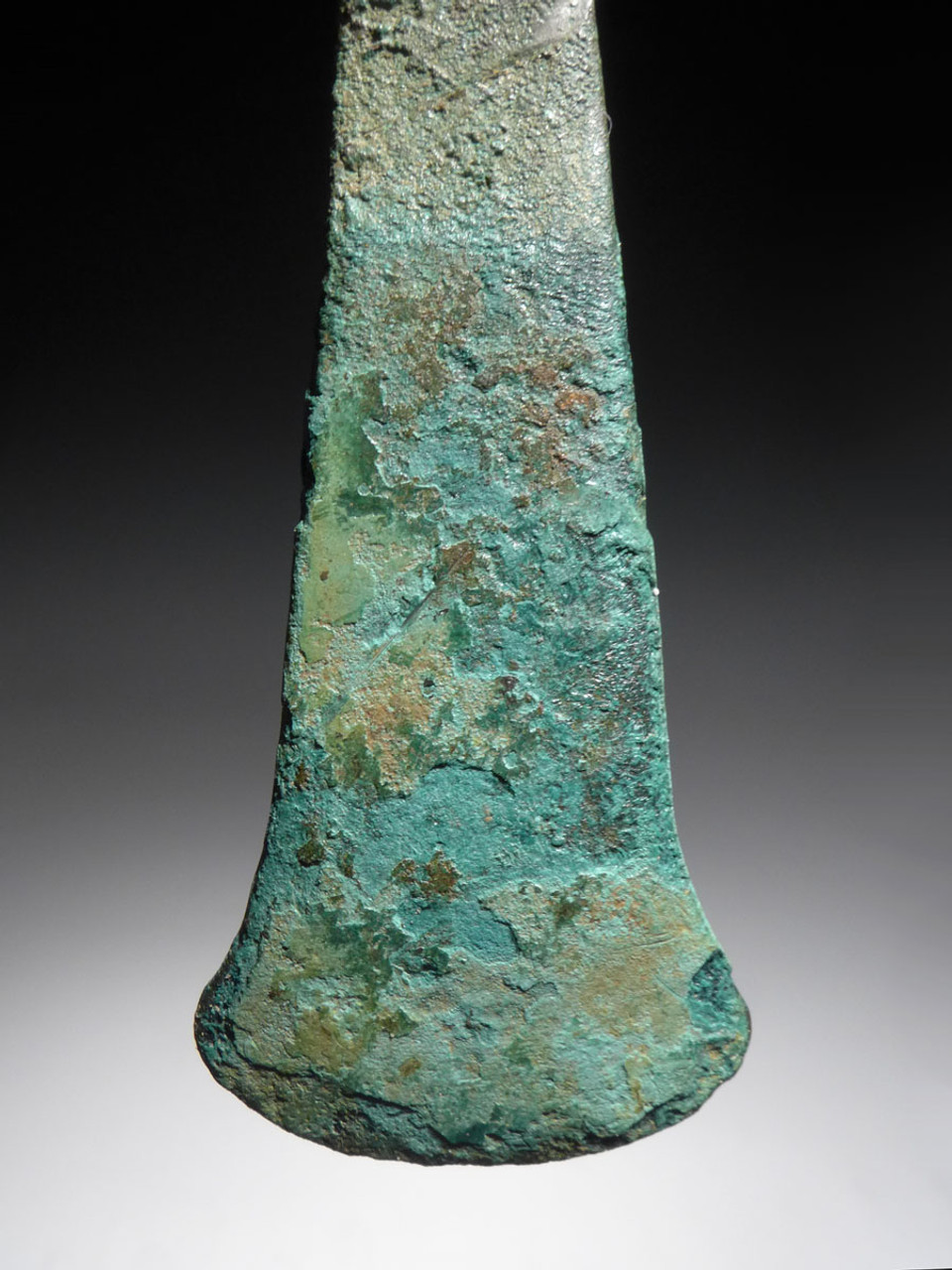Product Description
SEE MORE CHALCOLITHIC COPPER AGE ARTIFACTS
This RARE, genuine Chalcolithic copper axe was found in the Balkan region of Europe. It comes from the Balkan Chalcolithic (Copper Age) Culture, Europe's FIRST and OLDEST use of metal by mining and smelting copper in the region. This huge milestone in human tool technology originated in the Balkans around 5000 BC. With tin bronze objects dated in the Balkans to just before 4000 BC, the Chalcolithic Period was rather brief in history, much shorter than the Bronze or Iron Ages. Because of this, true Chalcolithic tools and weapons ARE VERY RARE! Not only is the Balkan Chalcolithic the first time metal was used in Europe, the oldest gold jewelry in human history dates to the Balkan Chalcolithic by the discovery of the Varna Necropolis in Bulgaria.
A Chalcolithic copper axe similar to this specimen, was the same axe found on Otzi the Iceman (SEE VIDEO ABOVE). This Balkan Chalcolithic example is older, as Chalcolithic technology that Otzi enjoyed, originated from the Balkan region where this axe came from. This axe would have been affixed to a wooden L-shaped shaft handle, and hafted with tar and cord bindings. The axe would have served both, as an invaluable tool, as well as a deadly effective weapon.
The narrow form of this elegant example indicates it would have been used for focused tasks in wood-working, as well as an effective penetrating weapon in combat. While the original collector had cleaned some of the axes in the collection because they were heavily encrusted beyond recognition, some specimens were left as they were found and this is one of those few examples that retain all its original patina layers and encrustations. The colors are superb, making this rare and prized copper axe even more impressive! This copper axe features exceptional form and workmanship, definitely the work of a master Chalcolithic metalsmith, and an extreme luxury item in a time when flint tools still dominated civilization!
While much less valuable copper Chalcolithic tools can be found on the market from later period Near Eastern regions, more valuable, older specimens come from the Balkan Chalcolithic and are rarely seen or available for private acquisition. The few Balkan Chalcolithic objects we have all came from the same small private German collection we acquired over 20 years ago. Once sold, we will never have this opportunity to offer them again. They are among the rarest metal artifacts we could offer.
HISTORY
The Chalcolithic (also called the Copper Age and Eneolithic) is an archaeological period characterized by the increasing use of smelted copper. It follows the Neolithic and precedes the Bronze Age. It occurs at different periods in different areas of the world, and is absent in some parts of the world, such as Russia. Stone tools were still predominantly used during this period.
A copper axe found at Prokuplje, Serbia contains the oldest securely dated evidence of copper-making, from 5500 BC (7,500 years ago). The find extends the earliest known record of copper smelting by about 800 years. Knowledge of the use of copper was far more widespread than the metal itself. The European Battle Axe culture used stone axes modeled on copper axes, even with mold casting lines of the copper axes replicated by carving as designs in the stone examples.
The Gumelniţa–Kodžadermen-Karanovo VI complex was a Chalcolithic cultural complex of the fifth millennium BC located in the eastern Balkans, comprising the Gumelnița, Kodžadermen and Karanovo cultures. It is also aggregated with the Varna culture. The Varna culture was a Chalcolithic culture of northeastern Bulgaria, dated c. 4500 BC, contemporary and closely related with the Gumelnița culture. The oldest golden artifacts in the world (4600 BC - 4200 BC) were found in the Necropolis of Varna.
Ötzi the Iceman, who was found frozen and emerging from a melting Ötztal Alps glacier in 1991, and whose remains have been dated to about 3300 BC, was found with a Chalcolithic copper axe. To see how these earliest of metal tools were used, see video above.
 US DOLLAR
US DOLLAR
 EURO
EURO
 AUSTRALIAN DOLLAR
AUSTRALIAN DOLLAR
 CANADIAN DOLLAR
CANADIAN DOLLAR
 POUND STERLING
POUND STERLING


















